UD: Feb. 2020

“Part of this region (Thrace) was inhabited by the Scordisci … a people formerly cruel and savage, and, as ancient history declares, accustomed to offer up their prisoners to Bellona and Mars, and from their hollowed skulls greedily to drink human blood. By their savageness the Roman state was often sorely troubled…”
(Ammianus Marcellinus Book 27: iv,4)
Written out of history by classical and neo-classical ‘historians’, the desperate wars of resistance by the Celtic and Free Thracian tribes against the expansion of the Roman Empire on the Balkans was one of the longest and most brutal conflicts in European history.
PAX ROMANA
After the defeat of Macedonia in the 3rd and 4th Macedonian Wars, and the ease and speed with which Rome had destroyed the Achaean League, it appeared that the Roman conquest of southeastern Europe was unstoppable. The utter destruction of the city of Corinth in 146 BC, and the mass looting and enslavement which accompanied the establishment of the Roman province of Macedonia, were a clear warning to those who would oppose the empire.
It was therefore logical to expect that the barbarian tribes of the central and northern Balkans would quickly succumb to the Roman military machine, and the ‘Pax Romana’ which accompanied it. In fact, the conquest of Thrace would develop into a brutal and prolonged conflict which was to rage for over 150 years.
The first military encounter between the Balkan Celts and the Roman empire occurred in 156 BC (Obsequens 16), but the extent or location of this clash remains unknown, and it is not until the establishment of the Roman province of Macedonia in 146 BC that this conflict intensifies. In 141 BC a Roman offensive in Thrace was repulsed by the Celts, as was a Scordisci counter-attack on Macedonia (see Kazarov 1919:75 – Кацаров Г. Келти в стара Тракия и Македония СпБАН 18, кл. ист. фил. 10. София 1918, 41 – 80). This resulted in a period of apparent stalemate which was broken in 135 BC when an imperial force defeated the Scordisci in Thrace (M. Cosconius praetor in Thracia cum Scordiscis prospere pugnauit – Livy Periocha LVI).

Military equipment from from the Scordisci burial complex at Karaburma in the Balkan Celtic settlement of Singidunum (today’s Belgrade), Serbia
(3/2 c. BC)


Detail of anthropomorphic decoration on the pommel of an iron sword, and scabbard decorated in the “Hungarian Sword Style”, from the Scordisci burial complex at Kupinovo (Syrmia), Serbia (3rd c. BC)
(after: Drnić I. (2015) Groblje latenske culture/A La Têne Culture Cemetery. Arheološki muzej u Zagrebu, 2015)
In the 20’s of the 2nd c. BC the Scordisci also came under attack from the north. An expansion of the Germanic Cimbri tribe was finally repulsed near the Celtic settlement of Singidunum (Belgrade), and the Cimbri migrated further west (Rankin D. Celts and the Classical World. New York 1987:19). It is likely that it was during these events that the most famous of Scordisci treasures, the Gundestrup cauldron, was looted and carried off by the Cimbri (Bergquist A.K., Taylor T.F. The Origin of the Gundestrup Cauldron, Antiquity, vol. 61, 1987. 10-24).

THE GUNDESTRUP CAULDRON
(National Museum of Denmark – Copenhagen)
See: https://balkancelts.wordpress.com/2016/09/06/the-gundestrup-ghosts-hidden-images-in-the-gundestrup-cauldron/

Celtic (Scordisci) jewelry box with ‘Foxtail’ chain from the Zidovar treasure (Serbia, 2/1 c. BC)
See: https://balkancelts.wordpress.com/2014/11/07/barbarian-masterpieces-celtic-jewelry-boxes/
It should be borne in mind that all the information that we have at our disposal concerning this conflict comes from the Romans themselves, who tended to be rather selective in what they reported. For example, the victory of Cosconius should logically have led to territorial gains by the Romans in Thrace. However, the victory in 135 BC is followed by an ominous silence in Roman sources which is eloquent in itself. By the time of the next report relating to 119 BC (Kazarov (op cit) puts these attacks in 117 BC) the Celts have pushed all the way to the Aegean coast where the Roman governor Pompeius was killed during an attack on Argos. The Scordisci were finally pushed back by a force commanded by Quaestor Marcus Annius, (SIG 700 Sherk 1 48 R.K. Sherk Rome and the Greek East to the Death of Agustus (1993); CAH 9’32 = Cambridge Ancient History 2nd Edition 1984 -1989) who also succeeded in repulsing a subsequent attack soon afterwards by the Scordisci, in alliance with the Thracian Maidi tribe.
The participation of the Maidi (the tribe of Spartacus, who would be captured by Rome during a latter phase of this conflict – see below) in the second attack on Macedonia in 119 BC is particularly noteworthy, because it marks the beginning of a new pattern which would continue for the next 100 years of this conflict. While the Thracian Celts continued to be the main element in the resistance to Roman expansion on the Balkans, from this point onwards they are frequently accompanied by other Balkan tribes, notably the Bastarnae, Dardanii, and the Free Thracian tribes (Maidi, Triballi, Denteletes, and Bessi).
In the aftermath of the events of 119 BC, the empire finally seems to have realized the gravity of the barbarian threat. In 115 BC Quintus Fabius Maximus Eburnus, who had been consul in 116 BC, was sent to Macedonia. Eburnus was renowned as a strict authoritarian figure who had sentenced his own son to death for ‘immorality’, and it appears that it was he who drew up the plans for the Roman conquest of Thrace (Valerius Maximus 6.1.5–6; Pseudo-Quintilian, Decl. 3.17; Orosius 5.16.8). As part of this strategy a Roman fortress was established at Heraclea Sintica (at today’s Rupite near Petritch in s.w. Bulgaria) under a commander called Lucullus. This garrison was situated in the strategic Struma river valley, the only practical route for a large military force to move into western Thrace. The culmination of the Roman strategy was the invasion of Thrace in 114 BC by a Roman army led by Gaius Porcius Cato.

Depiction of a Celtic (Scordisci) chieftain on a sliver/gilt plate from the Jakimovo treasure (Northwestern Bulgaria) II – I c. BC

Inscribed cult relief bearing a dedication to the Celtic tribal God Scordus (Sofia region, Bulgaria 4th – 3rd c. BC) (After Manov 1993)
( See: https://balkancelts.wordpress.com/2012/07/22/serdiserdica/ )
THE STRUMA MASSACRES
‘The cruelest of all the Thracians were the Scordisci…”.
(Florus, Epitome XXXVIIII (The Thracian War) III. 4)

The events of 114 BC were to prove catastrophic for the Romans. As mentioned, a Roman fortress was established on the upper Struma river at Heracleae Sintica, and two cohorts of Roman soldiers were stationed there under a commander called Lucullus (Front. Strat. 3,10,7). This fortress was on the border of, or even possibly within, the territory of the Celtic tribes in Thrace, and appears to have been intended as a staging post for further Roman expansion northwards. In 114 BC a Roman army, led by the consul Gaius Porcius Cato, marched along the Struma Valley into Thrace (Liv. Per. 63′a; Flor. 1.39, 1-4; Dio Cass fr. 88’1; Eutrop. 4.24.1; Amm. Marc. 27.4.4). The purpose of this attack appears to have been twofold – to eradicate the barbarian threat to Roman Macedonia, and to expand the empires power into the territory of today’s western Bulgaria.
 The western Rhodope mountains
The western Rhodope mountains
This heavily afforested and mountainous area of the western Rhodope mountains is ill suited for the conventional military tactics of an imperial army, but perfect terrain for the surprise attacks and ambush tactics used by the Thracian Celts in this period. It would appear that the Roman consul completely underestimated the situation both in terms of the terrain, and the military potential of his enemy. The invading Roman army was wiped out, and the Celts counterattacked.
After the destruction of Cato’s army the Celts advanced on the Roman garrison at Heracleae Sintica. In light of the fact that a large Roman army had just invaded Thrace it appears that the last thing the garrison was expecting was a Celtic attack. The ensuing events are described by the Roman historian Frontinius (40 – 103 AD) in his work Strategemata (3,19,7):
“Scordisci equites, cum Heracleae diversarum partium praesidio praepositus esset Lucullus, pecora abigere simulantes provocaverunt eruptionem; fugam deinde mentiti sequentem Lucullum in insidias deduxerunt et octingentos cum eo milites occiderunt”.
The attack on Heracleae was marked, not by the headlong barbarian charge often associated with the Celts, but by a much more subtle and successful tactic. A small group of Celtic horsemen were first dispatched and, pretending to drive off the livestock, provoked Lucullus into a fatal error. No sooner had the Roman force emerged from their defenses to hunt down the ‘barbarians’, than the main body of the Celtic cavalry attacked. What followed was less a battle than a massacre, in the aftermath of which the Roman commander and 800 of his soldiers lay dead.
In a series of devastating attacks, the Thracian Celts had brought Roman expansion on the Balkans to a brutal halt.

Material from the burial Scordisci Cavalry Officer at Montana (N.W. Bulgaria)
(RGZM – Inv. # 0.42301/01-08; late 2nd / 1st c. BC)
https://www.academia.edu/26277623/A_CELTIC_SCORDISCI_CAVALRY_OFFICER_FROM_MONTANA_BULGARIA_
See also: https://www.academia.edu/5385798/Scordisci_Swords_from_Northwestern_Bulgaria
QUI VENTUM SEMINAT …
The Scordisci victories of 114 BC brought a predictable reaction. The Celts were attacked in Thrace in 112 BC by the Consul Livius Drusus (Liv. Per 63′a; Flor. 1.39’5; Dio Cass. fr. 88’1; Festus Brev 9’2; Amm. Marc. 27.4’10), but the real retaliation for the events of 114 BC came three years later. In 109 BC a Roman army entered Thrace commanded by Minucius Rufus and, according to Roman sources (Flor. 1.39.5; Liv. Per. 65′a; Frontin Strat. 2. 4’3; Festus Brev 9’2; Eutrop 4.27’3; Amm. Marc. 27.4’10) and an inscription from Delphi (probably raised by Rufus himself), defeated the Scordisci and the Thracian Bessi tribe.

Inscription from Delphi mentioning the victory over the Scordisci and Bessi in 109 BC
(Dittenberger SIG 3, 348)
It is interesting to note that the campaign of 109 BC was launched, not along the Struma valley where Cato’s army had been destroyed, but along the Maritza (Hebrus) river valley, a route more suitable for a Roman army. Furthermore, this campaign appears not to have been directed at a specific military target, but at the ‘barbarian’ population in general. Thus, while the Scordisci are again mentioned as the focus of the Roman campaign, it was the Thracian Bessi tribe along the Hebrus river who bore the brunt of the Roman attacks. In fact, until this point the Bessi tribe had taken no part in attacks on Roman forces on the Balkans, nor had they played any role in the Celtic campaign against Rome. It would appear that the Thracian tribe simply happened to be ‘in the wrong place at the wrong time’.
In terms of Roman expansion in the Balkans, Rufus’ victory in 109 BC did not lead to any territorial gains, and the Roman forces retreated south into Macedonia, indicating again the punitive nature of the campaign. During their homeward march a large part of the Roman army was drowned when the ice on the Hebros (Maritza) river cracked underneath them (Flor. 1.39.5).
In the long term, the events of 109 BC did not significantly affect the geo-political situation in the Balkans. Rome had still not achieved a foothold in Thrace, and the attack on the Bessi tribe had the effect of turning this tribe into one of Rome’s most bitter enemies. In the ensuing conflict the Bessi became one of the most enthusiastic participants in attacks on Roman Macedonia, and continued to resist the Romans in Thrace even after the end of the Scordisci Wars. These events also forged closer links between the Bessi tribe and the Celts in Thrace.
The Roman campaign of 109 BC also appears to have had another long term effect. While encounters in this conflict prior to this had largely been confined to attacks on military targets, in subsequent ‘barbarian’ attacks on Roman occupied areas of the Balkans brutal tactics similar to those used by the Romans along the Hebros valley are recorded.
The next phase of this war was to be marked by a spiral of atrocities on both sides. If the Roman strategy had been to terrorize the Celtic and Thracian tribes into submission, they had failed miserably. There is a proverb coined by the Romans themselves – ‘Qui ventum seminat, turbinem metet’ (He who sows the wind, will reap the whirlwind). In the decades which followed, the Romans on the Balkans were about to reap the whirlwind.

Celtic Thasos type tetradrachma from central Bulgaria (1st c. BC).
The deteriorating political situation and the growing brutality of the conflict is accompanied by an increasing abstractionist tendency in Celtic art in the region
( https://www.academia.edu/6144182/Celtic_Thasos_Type_Coinage_from_Central_Bulgaria )
Attacks on Roman Macedonia by the Scordisci and their Thracian allies, notably the Maidi tribe, continued throughout the final years of the 2nd c. BC, and the first decade of the 1st c. BC (St. Jerome, (Hieronymus) 170.1; Obseq. 43; Hieron. Chron. 1917; Flor. XXXVIIII, iii, 4; Cic. Pis. 61; Festus. Brev. 9’2). The militarization of Celtic society in Thrace during this period is evident from the dramatic increase in finds of La Têne weaponry from this period compared to earlier phases. The turbulent events are also reflected in mass ‘war’ burials such as that at Slana Voda, and in the numerous hoards of Hellenistic and Roman ‘plunder coinage’ from Thrace found together with Celtic issues from this period, which bear clear testimony to the ‘barbarian’ attacks on Roman Macedonia and Greece ( see: https://www.academia.edu/4963636/Plunder_Coinage_from_Thrace ).

Distribution of Celtic weapons in northwestern Bulgaria – 2nd – 1st c. BC (See: https://www.academia.edu/5385798/Scordisci_Swords_from_Northwestern_Bulgaria )

The Balkan Celtic fortress at Krševica near Bujanovac in southern Serbia
With the gradual Roman expansion into this region during the late 2nd / 1st century BC, and the resulting war of resistance by the local tribes, Krševica became of particular strategic importance. During this brutal conflict, the fortress was used by the Scordisci Federation, in conjunction with other members of the ‘barbarian coalition’, including the Free Thracian tribes and Dardanians, as a staging-post for frequent attacks/raids on Roman occupied territory to the south.
https://balkancelts.wordpress.com/2015/12/06/the-balkan-celtic-fortress-at-krsevica-southern-serbia/
By the beginning of the 1st c. BC the Roman forces on the Balkans were feeling the strain of the apparently endless attacks from the north. In 90 BC the dam finally burst and, confronted by yet another Celtic/Maidi attack, the Roman borders disintegrated (Kazarov op cit.). The events which followed are described by the Roman historian Florus (Epitome of Roman History XXXVIIII, iii, 4). The Celtic tribes, now joined by the Maidi and Denteletes, as well as the Dardanii, swarmed through Macedonia, Thessaly and Dalmatia, even reaching Epirus on the Adriatic coast. According to the Roman historian:
“Throughout their advance they left no cruelty untried, as they vented their fury on their prisoners; they sacrificed to their gods with human blood; they drank out of human skulls; by every kind of insult inflicted by burning and fumigation they made death more foul; they even forced infants from their mother’s wombs by torture”.
In this litany of evil atrocities committed by their enemies, special mention is reserved by the Romans for the Celts – “The cruelest of all the Thracians were the Scordisci, and to their strength was added cunning as well” (loc cit.).
While much of the above account may be put down to Roman hysteria and exaggeration, it is clear that from 90 BC onwards the empire had lost de facto control over large parts of the Balkans and northern Greece. By 88 BC, i.e. 2 years after the collapse of the Roman borders in Macedonia, the Scordisci and their allies had swept through northern Greece and reached Dodona in Epirus where they, according to Roman accounts, destroyed the temple of Zeus (Kazarov 1919 with relevant lit). How exactly the barbarians ‘destroyed’ a temple which the Romans had already destroyed (by the army of Aemilius Paulus in 167 BC) is unclear. Presumably the Scordisci destroyed what the Greeks had managed to rebuild in the interim period. One of the repeating phenomena during this period is Roman reports of the ‘barbarians’ destroying Greek temples/sacred sites which had already been destroyed and looted by the Romans themselves (see below).

The Theatre at Dodona
It was not until 3 years later (85 BC) that Sula led a Roman army against the Scordisci and ‘punished’ the barbarians (Granius Licinianus 27-28; Appian Mith. 55 c; Livy Per 83’a). Although the exact nature of this ‘punishment’ is unclear, Florus gives us an account of the fate of those who fell into Roman hands:
“Severe cruelties were inflicted upon the captives by fire and sword, but nothing was regarded by the barbarians as more horrible than they should be left with their hands cut off and forced to survive”. (Flor. XXXVIIII, iii,4)

Bust of Sulla in the Munich Glyptothek
Instead of containing the situation, Sulla’s campaign produced the same vicious reaction as Minucius Rufo’s had in the previous century. No sooner had Sula left for Asia, than the Celts and their allies stormed south once more. Overrunning the southern Balkans and northern Greece, they swept through the Peloponnese. By the winter of 85/85 BC they had reached Delphi where, two centuries after Brennos’ army, they once more ‘destroyed’ the most sacred of Greek religious sites. (Plut. Num. 9; App. Illy. 5; Eusub. II; Eutrop. V, 7,1; Plut. Sula 23).

Temple of Apollo at Delphi

At the end of the 80’s of the 1st c. BC the central Balkans again became the focus of large scale Roman military action. Presenting themselves as protector of the Greeks, the Romans launched yet another campaign to ‘punish’ the barbarians, this time for the sacrilege at Delphi (although again the temple had been plundered by Sula’s Roman forces long before the barbarians got there). The campaign of 81 BC, led by Cornelius Scipio (App. Ill. 5 a-b) appears, like those of Minucius Rufo and Sula in 114 and 85 BC, to have been punitive in nature and, like the previous ones, had no real long term geo-political effect.



The Druids Cave – Part of a large hoard of Celtic (Scordisci) material (14 sets of weapons, harness gear, jewellery… ) discovered in a cave on the Juhor Mountain in central Serbia.
COME INTO MY PARLOUR …
Five years after Scipio’s campaign Rome once more attempted a large scale invasion of Thrace. In 76 BC Appius Claudius Pulcher, who had been governor in Macedonia since the previous year, led a large Roman army against the Celts in southwestern Thrace. (Liv. Epit. XCI; Flor. II, 39.6; Eutrop. VI,2; Oros. V 23.19; Amm. Marc. XXVII, 4.10) It should be noted that in this case the term Scordisci is applied by the Romans to the tribes of today’s southwestern Bulgaria who lived in the Rila/Rhodope mountains area. This once again clearly illustrates that the term was used by the Romans to refer to all the Celts of Thrace, whether in today’s Serbia, northern Bulgaria or, as in the present case, southwestern Bulgaria. Thus, the tribes targeted by Pulcher’s army were the same ones who had destroyed the army of Porcius Cato, and massacred the Roman garrison at Heraclea Sintica, in 114 BC.
The Celtic tactics in 76 BC, however, were very different to those which had been employed 40 years earlier. Instead of engaging in a full-scale military confrontation with what was probably a superior military force, the Scordisci employed a more subtle course of action. Pulcher’s force encountered no major resistance as they advanced into the Thracian mountains. However, as Cato’s army had learned in the previous century, entering the Rhodope mountains was one thing – getting out again was a completely different story.
A prolonged and vicious conflict developed in the mountains of Thrace between the Romans and the local population. Roman sources speak of a series of ‘small battles’ and ‘skirmishes’ which are consistent with a guerilla campaign in which the Celts, familiar with the terrain, gradually wore down the Roman force. This conflict, which is reminiscent of the Roman campaign in northern Britain in the 2nd c. AD, finally took its toll, not only on the Roman army, but on its commander. After months of illness and military failure, Pulcher himself died, and the remains of the Roman army once more withdrew from western Thrace.

Celtic Strymon/Trident coin from s.w. Thrace (late 2nd/ 1st c. BC)
( See: https://www.academia.edu/6355583/Celtic_Strymon_Trident_Coinage )
Despite the latest failure in the Rhodope mountains, Rome was gradually making advances in other parts of Thrace. During the campaigns of Cnaeus Scribonius Curio in w. Thrace from 75 BC the Romans finally penetrated the Struma valley and reached the Danube (Liv. Per. 92’a; Front. Strat. 4.1’43; Flor. 1,39’6; Festus Brev. 3’2, 7’5; Eutrop. 6.2’2). During the Curio campaign large numbers of the native population were enslaved by the Romans, one of whom was a chieftain of the Maidi tribe – Spartacus. In this case, however, it appears that Rome had taken the vipers to her bed. In 73 BC a number of Thracian and Celtic slaves, led by Spartacus and the Celt Crixus, rose against the empire in a rebellion that would shake the very foundations of Rome. (Cic. Att. 6.2’8; Sall: Hist. 3’60-61; Liv. Per. 92’a; Vell. 2.30’5; Tac. Ann. 15’46; Plut. Crass. 8, 1-3; Flor. 2.8’3; Appian B. Civ. 116’a-b; Eutrop. 6. 7’2; August De Civ. 3.26’b, 5.22’a; Oros. 5.24’1)
In Thrace itself, however, Curio’s campaign, and that of Lucullus in 72/71 BC in eastern Thrace, in which the latter conquered the Pontic cities and the central Thracian Valley, meant that the local tribes were now fighting an increasingly defensive war. Ironically, in the decades which followed it would not be Roman military force alone which would finally achieve the conquest of Thrace but, as with so often in Balkan history, treachery from within.
THE DACIAN BETRAYAL
For over 100 years the unity of the Balkan peoples – Thracians, Celts, Dardanii and Bastarnae – had held back the tide of Roman expansion in southeastern Europe. In the mid 1st c. BC this unity was torn asunder by the greed and ambition of one of these tribes, who unleashed an orgy of violence and destruction on its neighbors which would create the conditions for final conquest that Rome herself had failed to achieve.
The Thracian Getae tribe who inhabited the area of today’s s.e. Romania and n.e. Bulgaria had been one of the main components in the barbarian resistance to Rome from the 2nd c. BC onwards. In 61 BC they were again part of the force which, led by the Bastarnae, delivered a humiliating defeat on the Roman army of G. Antonius Hybrida (‘The Monster’) at the Battle of Histria (Dio Cass. 38. 10. 1-3; Liv. Per. 103’b; Obseq. 61’a; see: https://balkancelts.wordpress.com/2013/02/02/akrosas-the-king-who-scared-a-monster/).
However, after Histria the relationship between the Getae (referred to in Roman sources by the geographical term ‘Dacians’) and their neighbors changed radically. From 60/59 BC the Getae tribe, under a leader called Burebista, who was apparently guided by a wizard called Deceneus, launched a series of brutal attacks on their former allies. The territory of the Celtic Boii and Taurisci in the west and the Scordisci in Thrace were laid waste and Burebista also ‘conquered’ the territory of his recent allies the Bastarnae in Dobruja, as well as the largely defenceless western Greek Pontic cities (Strabo 7.3.5, 7.3.11, 16.2.39; Jordanes Getica 67; Suetonius, Caesar 44.6). Towns such as Olbia, Histros and Mesambria which resisted him were destroyed. Burebista subsequently declared himself ‘King of all Thrace’ as attested to by the Dionysopolis decree (ψήφισμα) (lines 22–23; dated to June-August 48 BC -Mihailov, IGBulg I2, 13 = V, 5006; Dittenberger, Sylloge inscriptionum Graecarum, II, 762).
In his quest for personal power, the brutality of Burebista’s attacks on his neighbors had reached genocidal proportions (Strabo VII 3:2, 11). For example, the territory of the Boii tribe after Burebista’s expansion was known as the deserta Boiorum (deserta meaning ’empty or sparsely populated lands’). The period of Burebista’s attacks also coincides with the end of local (Celtic and Bastarnae) coin production in this area, indicating that the economic and cultural status quo in the area was fatally disrupted during this period. Archaeological data from today’s southern Dobruja region also indicates the nature of Burebista’s ‘Dacian’ expansion. Of 70 late Iron Age settlements in today’s northeastern Bulgaria, only 29 survived into the Roman period and even at those there is no certainty of continuous habitation (Torbatov S. The Getae in Southern Dobruja in the Period of the Roman Domination: Archaeological Aspects. In: Actes 2é Symposium International Des Etudes Thraciennes, Komotini 1997. P. 512-51).
From a geo-political perspective, Burebista had destroyed the unity of the native population and severely weakened the very tribes who had for so long constituted the main opposition to Roman expansion. By the end of his reign the ‘Great Dacian King’ had created optimum conditions for Rome to complete her conquest of southeastern Europe – including Dacia itself.
In the 40’s of the 1st c. BC the fortunes of the Getae turned. Supporting Pompey in the Roman civil war, Burebista became the target for the victorius Caesar (Strabo VII:3.5). However, before the Romans could reach them the Getae became the subject of revenge attacks from their old allies, particularly the Bastarnae. In 44 BC Burebista was murdered by his own people and, in the face of repeated Bastarnae attacks, the Getae turned for help to their only remaining ‘friend’ in the region – Rome.
As Roman expansion in Thrace gathered pace, the Bastarnae crossed the Danube in 29 BC to come to the aid of the Scordisci tribes in today’s northwestern Bulgaria. The Roman forces, led by the proconsul of Macedonia M. Licinius Crasus, and helped by the Getic king Roles, defeated the Bastarnae and forced them back across the Danube. Roman sources tell us that the Bastarnae were ‘destroyed’ by Crassus (Dio Cass. 51,25-27), but, as with so often in Roman accounts, this is a gross exaggeration. In fact, the Bastarnae would continue to be a major thorn in Rome’s side for centuries, and an enthusiastic participant in every major ‘barbarian’ attack on Roman Dacia and Thrace right up to the collapse of the empire.
TWILIGHT
Crassus’ campaign of 29 BC and a subsequent one the following year in which he ‘punished’ the Scordisci tribes of northwestern Bulgaria (the Serdi, Meldi and Artacoi) (Dio Cass. 51. 26-27), marked a watershed in the history of Thrace. Soon afterwards a Thracian puppet government, drawn from members of the Odrysae tribe who had collaborated with Rome (loc cit), was installed to preside over the Romanization of Thrace. This so-called Sapaioi dynasty had little or no popular support in Thrace and Roman armies had to repeatedly intervene to save the new Thracian ‘kings’ from their own people.
(On the Odrysae Puppet Kings : https://www.academia.edu/4126512/Sevtopolis_and_the_Valley_of_the_Thracian_Kings )

Bronze issue of the Thracian ‘King’ Rhoemetalkes.
Laureate head of Caligula left / diademed & draped bust of Rhoemetalkes III left
see: https://balkancelts.wordpress.com/2012/07/05/the-thracian-puppet-kings/
In the final decades of the 1st c. BC the Roman conquest of Thrace, after almost exactly 150 years of resistance by the native tribes, had finally been achieved. Or had it ?
Before the dust settled on Roman Thrace there was one more surprise in store for the empire. In 16 BC, as the new imperial order was gradually being imposed, Celtic tribes swooped from the Thracian mountains, swarmed into Macedonia, and laid waste to the Roman province once again (Dio Cass. 54.20). This attack, which can only have come from the Celts of the Rhodope area of today’s southwestern Bulgaria, was a brutal reminder to Rome that although the cities and plains may have been ‘civilized’, in the mountains of central and western Thrace the ‘wolves’ still roamed…
Mac Congail


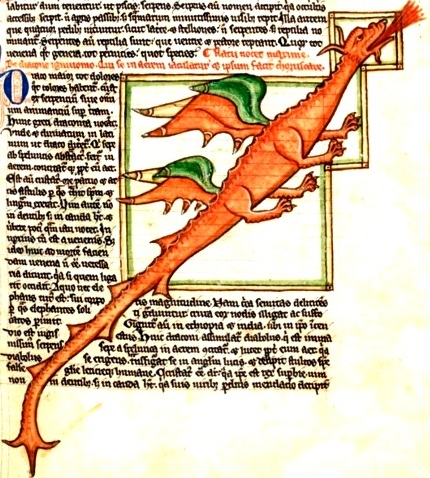


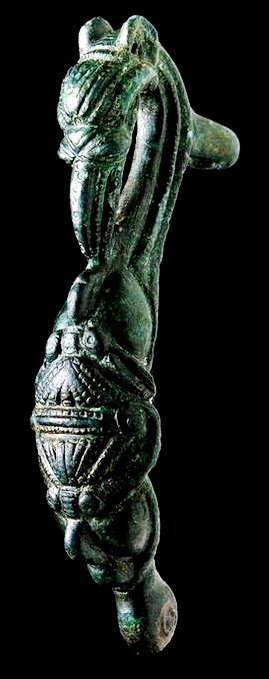


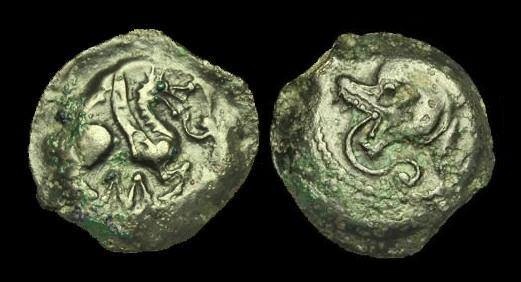


















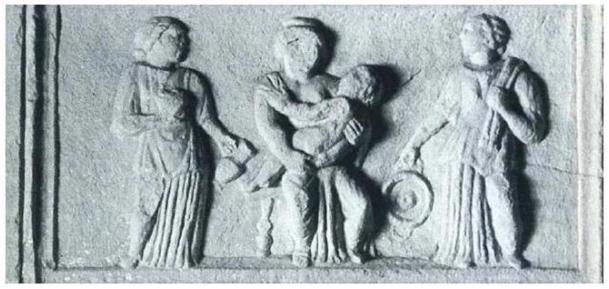



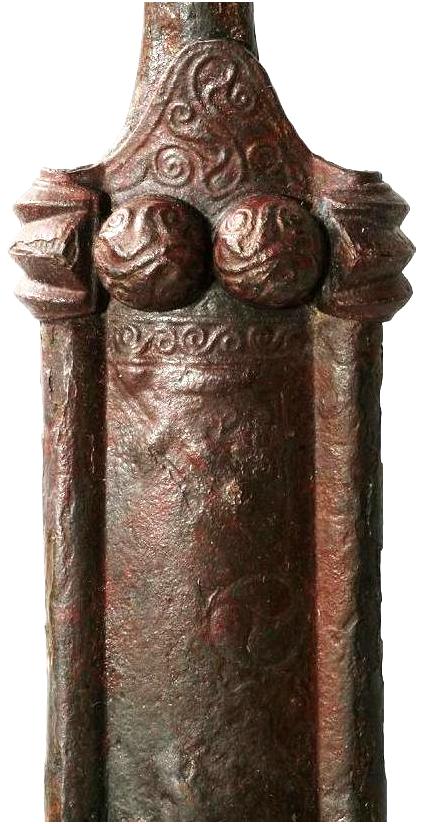


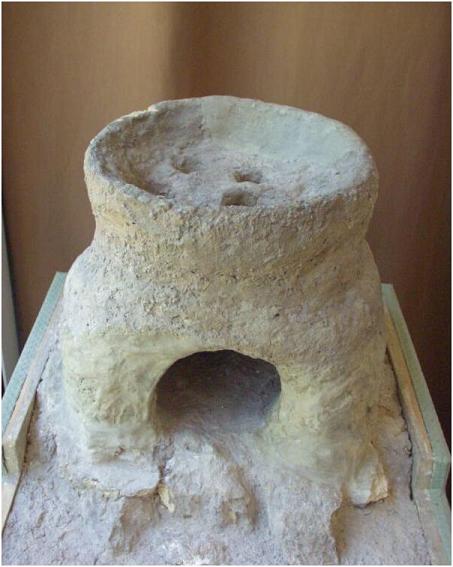


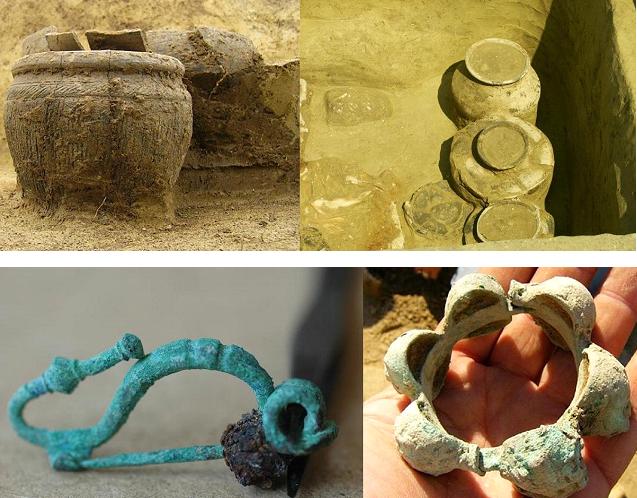

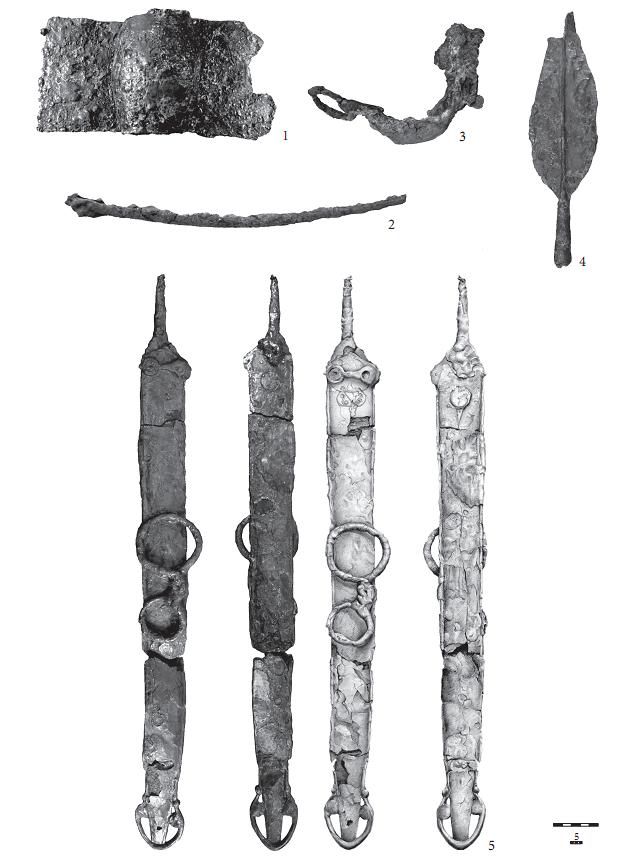
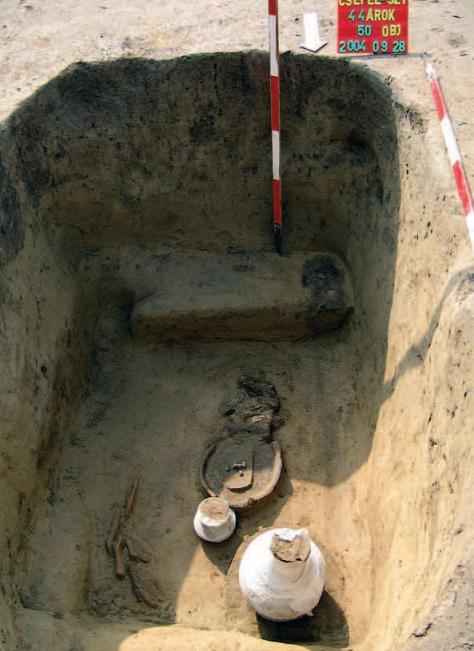













 Celtic scabbard with Dragon-Pair motif from the Celtic (Scordisci) site at Osijek Ciglana-Zeleno polje in eastern Croatia
Celtic scabbard with Dragon-Pair motif from the Celtic (Scordisci) site at Osijek Ciglana-Zeleno polje in eastern Croatia
















 The western Rhodope mountains
The western Rhodope mountains












